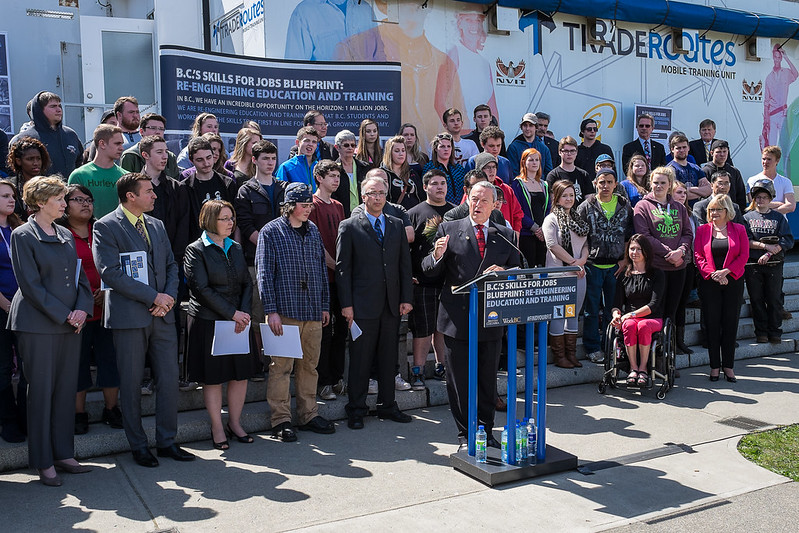“Souls cross ages like clouds cross skies, an’ tho’ a cloud’s shape nor hue nor size don’t stay the same, it’s still a cloud an’ so is a soul. Who can say where the cloud’s blowed from or who the soul’ll be ‘morrow? Only Sonmi the east an’ the west an’ the compass an’ the atlas, yay, only the atlas o’ clouds.” (Mitchell, 2008)
What is curriculum?
Kieran Egan begins his essay, “What is curriculum?” (Egan, 1978) by presenting the idea that schools and curriculum constitute a process by which “children are initiated into particular modes of making sense of their experience and the world about them, and also into a set of norms, knowledge and skills which the society requires for its continuance.” John Dewey presents a similar vision of schools that are “responsible not to transmit and conserve the whole of its existing achievements, but only such as make for a better future of society” (Dewey, 1916):
“It is the office of the school environment to balance the various elements in the social environment, and to see to it that each individual gets an opportunity to escape from the limitations of the social group in which he was born, and to come into living contact with a broader environment.” (p. 20)
Dewey’s description can be seen in congruence with the critical ontology of the self that Michel Foucault described in his essay “What is Enlightenment?” (Foucault, 1984), which should: “be considered not, certainly, as a theory, a doctrine, nor even as a permanent body of knowledge that is accumulating”:
“It has to be conceived as an attitude, an ethos, a philosophical life in which the critique of what we are is at one and the same time the historical analysis of the limits that are imposed on us and an experiment with the possibility of going beyond them.”
It is toward this ideal of enlightenment that we might apprehend the spirit of the Canadian Charter of Rights and Freedoms (Canada, 1982), or the Multiculturalism Act (Canada, 1988), which seeks “to promote the full and equitable participation of individuals and communities of all origins in the continuing evolution and shaping of all aspects of Canadian society.” While Egan notes that “one symptom – or perhaps condition – of pluralism is the conflict and argument about what [the] curriculum of initiation should contain,” it should not be controversial to state that the mandate of education includes an introduction to (and the rehearsal of) the requisite skills which promote this “full and equitable participation” in the creation of our collective societal narrative(s) and identity.
This paper attempts to describe the nature of knowledge-creation in the Digital Age, and outline an approach to curriculum and citizenship that embraces an emergent sense of identity and culture.
Emergence in the Digital Age
The modernist conception of citizenship expressed in the Multiculturalism Act aligns neatly with possibilities brought about through the revolution in communication technologies that can be thought of as our Digital Age. Simsek and Simsek characterize the early stages of the Digital Age as a time when “the forms of information have changed drastically” (Simsek & Simsek, 2013):
“Information processing has been transformed from being passive receivers to active information processors, who must engage, construct, respond and act with information.” (p. 127)
“Our emergent digital times,” Nahachewsky and Slomp argue, “challenge the authority of any one author or teacher” (Nahachewsky & Slomp, 2009). However, envisioning a curriculum that might challenge the central authorial role of the teacher presents a number of difficulties, as Osberg and Biesta argue that such an emergent information landscape assumes that “Knowledge is neither a representation of something more ‘real’ than itself, nor an ‘object that can be transferred from one place to the next[i]” (Osberg & Biesta, 2008). The emergent classroom is a place where
“Knowledge is understood, rather, ‘to ‘emerge’ as we as, as human beings, participate in the world.” (p. 313)
This view of knowledge is congruent with Simsek and Simsek’s description of the literacies required to actualize democracy in the digital era, which “differ from the previous ones, mainly due to their operational, interactive and user-based technological characteristics” (p. 129). Here we see that the emergent view of knowledge-construction, which presents a difficulty to institutional learning, may be supported by the advent of digital communications technologies.
Teaching and learning in polyphony
“If we hold that meaning is emergent,” Osberg and Biesta state. “Then the idea that educators can (or should) control the meanings that emerge in the classroom becomes problematic” (p. 316). Sidorkin admits that “the tragic side of such a situation is that regardless of teachers’ intentions the relationship cannot become equal and truly dialogical” (Sidorkin, 2000). Despite one’s best efforts, the context of organized learning assumes orientation toward certain aforementioned goals and/or outcomes.
Paulo Freire confronted the student-teacher contradiction by prescribing what he called the “problem posing method” of education, whereby curricular content “constantly expands and renews itself” (Freire, 1970):
“The task of the dialogical teacher in an interdisciplinary team working on the thematic universe revealed by their investigation is to “re-present” that universe to the people from whom she or he received it – and “re-present” is not as a lecture, but as a problem” (p. 122).
However this framework maintains the authority of the teacher to “re-present” the reality of students toward their emancipation and as such is deserving of Bruner’s critique (highlighted by Nahachewsky and Slomp) in that the student becomes a “performing spectator” who “does not invent the world, [but] uses it” (Bruner & Bruner, 2009).
Sidorkin looks beyond this dialogical model toward Bakhtin’s idea of polyphony (Bakhtin & Emerson, 1993), and proposes that “the problem of imbalanced relation is not to be countered with power sharing based on considerations of equality.” Rather, he says, it should be “addressed with polyphony, the principle of engaged co-existence of multiple yet unmerged voices” (Sidorkin, 2000). The literacies attending such curricular intentions can be seen to revolve around the realization of a critical awareness of one’s community, and an ability to articulate a unique perspective within it. And it is here we see the notion of emergence begin to exist in a dual sense, as it arises in a collective narrative of community, but also in the individual’s sense of themselves within that community.
Sidorkin argues that curricular authority in the classroom should aim toward the realization of mutuality in meaning-making, stating “The polyphonic authority creates mutuality, and only this kind of authority should be used in education.”
It is this invitation to mutuality that Nahachewsky and Slomp describe by noting that:
“If students are allowed, through openness in the curriculum and their teachers’ language, to become part of a negotiation, facts then are created and become interpreted understandings shared by teacher and students, rather than transmitted by teachers as predisposed ‘truths’” (Nahachewsky & Slomp, 2009).
The skills and competencies attending such collective meaning-making may well have long been essential to the democratic project, as Simsek and Simsek note that “democratic values needed for citizenship are not different for new literacies.” However, they present the Digital Age as an opportunity to realize further promise of the democratic project:
“Many democratic values could be acquired by new literacies. New literacies are prerequisites for digital citizenship. New literacies increase the availability of relevant and credible information and broaden the capacity of individuals to get, share, compare, and contextualize information by developing new skills” (p. 133).
While they are careful to not describe the revolution in communicative technology as a panacea in an era of anemic political engagement and accountability, the authors do note that such a summary of digital citizenship embraces the value of broad contribution to an emergent, collaborative constructed community. Optimistically, they note, “Digital citizenship could create a more transparent, connected and participatory democratic environment” (p. 132).
Curriculum as Identity
The advent of the Digital Age has led to an increase in the opportunities for individuals to contribute their voice to the type of polyphonic democracy suggested by Freire and Sidorkin. Simsek and Simsek characterize the Digital Age by highlighting the increasing ability and access individuals have to spaces in which they might cultivate a networked, public “identity.”
“Identity in the digital territory is seen as a higher construct of literacies, which enables the citizen to act as a person with culture and independence as well as with critical abilities and democratic values” (Simsek & Simsek, 2013).
When conceived of in this fashion, the society education serves intends to admit all voices in its chorus, and asks that schools provide learning in the conception and expression of individual and pluralist identities. This is a process that unfolds endlessly, as the One and the Many are constantly making each other (Follett, 1919), and it is toward this critical praxis that education must orient the student experience if it is to achieve Freire’s “critical and dynamic view of the world” by which we might realize what he considered the central human objective: “permanent transformation of reality in favor of the liberation of people.” The progress toward this pluralist aim is the stated purpose of the Canadian Constitution, and should guide the continued exploration of curriculum in the Digital Age.
Bakhtin, M. M. M., & Emerson, C. (1993). Problems of Dostoevsky’s poetics: U of Minnesota Press.
Bruner, J. S., & Bruner, J. S. (2009). Actual minds, possible worlds: Harvard University Press.
The Constitution Act, 1982 (1982).
Canadian Multiculturalism Act (1988).
Dewey, J. (1916). Democracy and education: An Introduction to the Philosophy of Education. New York: Macmillan.
Egan, K. (1978). What is curriculum? Curriculum Inquiry, 65-72.
Follett, M. P. (1919). Community is a process. The Philosophical Review, 576-588.
Foucault, M. (1984). What is Enlightenment? . In P. Rabinow (Ed.), The Foucault Reader. New York: Pantheon Books.
Freire, P. (1970). Pedagogy of the Oppressed (M. B. Ramos, Trans. 30th Anniversary Edition ed.): The Continuum International Publishing Group Inc.
Mitchell, D. (2008). Cloud Atlas: A Novel: Random House LLC.
Nahachewsky, J., & Slomp, D. (2009). Sound and fury: Studied response (s) of curriculum and classroom in digital times. Beyond ‘presentism”: Re-imaginging the historical, personal and social places of curriculum, 139-151.
Osberg, D., & Biesta, G. (2008). The Emergent Curriculum: Navigating a Complex Course between unguided Learning and Planned Enculturation. Journal of Curriculum Studies, 40(3), 313-328).
Sidorkin, A. M. (2000). Toward a pedagogy of relation.
Simsek, E., & Simsek, A. (2013). New Literacies for Digital Citizenship. Online Submission, 4(3), 126-137.
[i] See Biesta and Burbules (2003), Biesta and Osberg (2007), Cilliers (1998) and Osberg et al. (in press).




